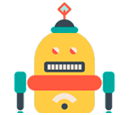Ask Singapore Homework?
Upload a photo of a Singapore homework and someone will email you the solution for free.

Question
secondary 4 | E Maths
One Answer Below
Anyone can contribute an answer, even non-tutors.

Thanks.....
When you increase the denominator without a change in the numerator, the overall fraction decreases. For example, 2/5 is smaller than 2/3.
As a result, when you decrease the numerator AND increase the numerator, the overall fraction decreases. For example, 1/4 is smaller than 2/3.
This question works as such.
x is 20% lesser than m and both are the numerators of the fraction, so m is decreased (into x).
y is 30% greater than n and both are the denominators of the fraction, so n is increased (into y).
As a result, the new fraction is a decrease in the numerator and an increase in the denominator, so even without knowing the percentages, I can tell that the fraction decreases.
See 1 Answer




